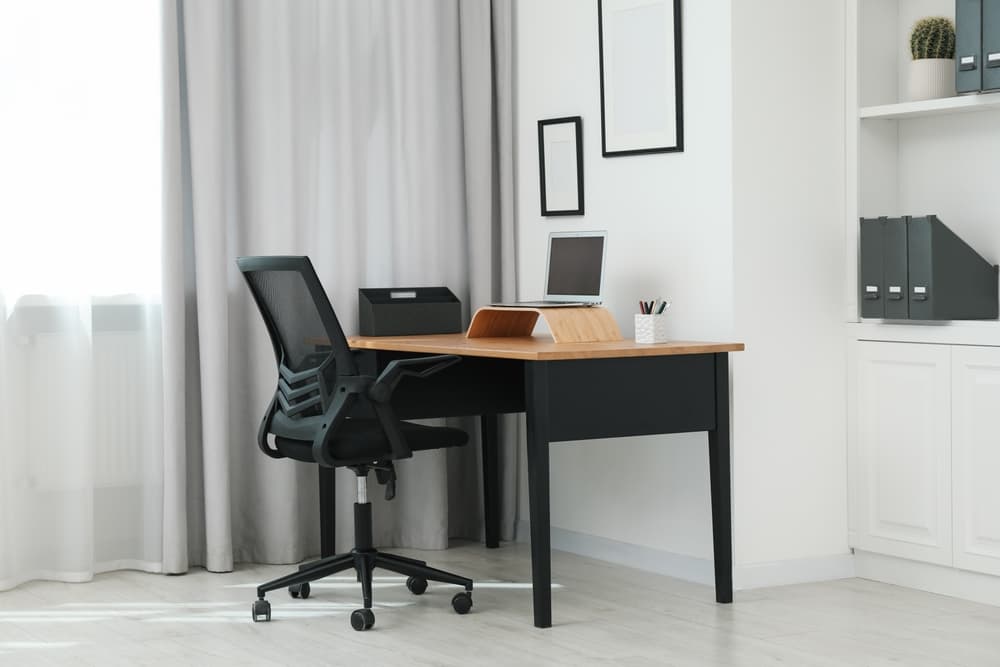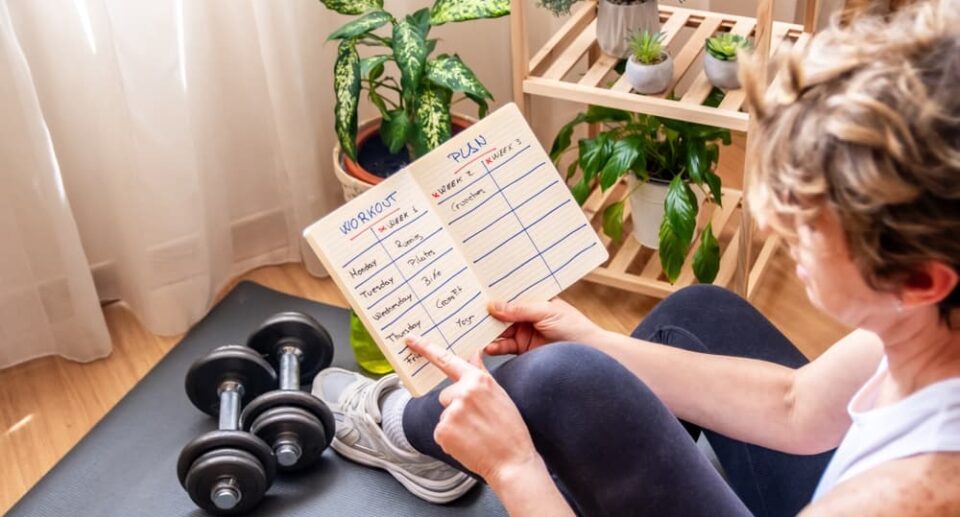How to create a stress-free work environment at home


Working from home is now part of many people’s daily lives. As comfortable as it may have seemed at first, over time, many have realized that it is not always easy to manage work, rest, and family responsibilities in the same place. A messy work environment, excessive noise, or staring at a screen all the time increases our stress and reduces our focus on work.
The lack of direct contact with the office environment or colleagues often leads to problems such as loneliness, long working hours, or ‘burnout’. But there is nothing to despair! A corner of your home can also be your most productive and stress-free workspace. All it takes is a few simple techniques and habit changes.
How to create a stress-free work environment at home is not only essential for peace of mind but also for maintaining efficiency and creativity. A few small changes, such as the proper lighting, time management, and conscious breaks, can completely transform your work experience. Today, we will learn how to create a calm, focused, and productive workplace at home.
A study in the Journal of Environmental Psychology found that natural light, green plants, and a tidy desk help increase mental calm and focus.
Make your workspace stress-free
The most crucial step when working from home is to keep your workspace free from sources of stress. Our brain perceives a cluttered environment as additional information, which disrupts attention and increases stress. Therefore, your workspace should be your haven of peace.
Create a designated work space
Working from home does not mean that you will work on the couch or in bed. It is essential to create a clear division between work and rest.
Physical separation: Designate a specific corner of the room or a separate room just for work. If there is no separate room, use a screen or bookshelf to separate your workspace from the rest of the room.
Quiet area: Choose a place where there is little movement of family members and where there is little outside or indoor noise.
‘Office-time’ space: Train your mind that whenever you sit in this specific space, it is your ‘work time’. Get up from that space when you are done with work at the end of the day.
Ergonomic Furniture


An uncomfortable chair or table not only causes physical pain but also mental stress. Working for long periods in the wrong posture can lead to back, neck, and eye problems, which can lead to work fatigue.
Chair: Use a comfortable ergonomic chair that correctly supports your back. Keep your feet flat on the floor.
Table: Use a table at a height that allows your elbows to be at a 90-degree angle.
Monitor: Place your monitor or laptop so that the top of the screen is parallel to your eyes. Use a laptop stand or book if necessary.
Light and a touch of nature
Light and the presence of nature have a direct impact on our mood and productivity.
Natural light: Try to place your desk near a window. Natural light reduces stress and provides vitamin D, which helps maintain a good mood.
Artificial light: If natural light is lacking, use a warm-tone desk lamp that reduces eye strain.
Plants: Keep small indoor plants like money plants or succulents on your desk. Studies have shown that plants in the work environment help reduce stress and fatigue.
Digital and Physical Cleanliness
Not only is physical cleanliness enough to stay stress-free, but digital cleanliness is also necessary.
Desk Cleaning: Keep only the things you need for work on your desk. Remove unnecessary papers, old notes, or coffee cups. Follow the principle of ‘clean desk, clear mind’.
Cable Management: Messy cables are a significant stressor. Use cable ties or slots to organize cables.
Digital Cleanliness: Keep your computer desktop clean. Organize files and create folders. Turn off unnecessary emails or notifications.
The importance of routine and time management
A consistent work schedule
Even if you don’t go to the office, your body and mind should know when work starts and ends. Maintaining this consistency will automatically prepare your body for work.
Fixed time: Create a routine to start and end work at the same time every day.
Morning preparation: Change clothes in the morning as if you were getting ready for the office, have breakfast, and take a light walk. This ‘Morning Routine’ will prepare your mind for work.
Use ‘Commute Time’: Use the time that used to be spent commuting to the office for exercise, meditation, or personal development. This creates a positive mental environment.
Give importance to breaks
Continuous work leads to fatigue, and the level of attention drops quickly. The proper breaks recharge your mind and make you more effective.
Micro-Breaks: Take a short break of 5 to 10 minutes after every 1 to 2 hours of work. During this time, remove your eyes from the screen, stand up, and walk around.
Lunch Break: Take a break from work during lunch. Try to eat at the dining table or in another room. Avoid checking email or thinking about work during your break.
Pomodoro Technique: Try this technique of 25 minutes of work and 5 minutes of break. It helps you break down complex tasks into smaller chunks.
Prioritize tasks and set goals
If you don’t have a clear list of tasks at the beginning of the day, we often put off important tasks and spend time on less critical tasks, which causes anxiety at the end of the day.
To-Do List: Identify your top 3-5 tasks at the beginning of the day and make a list of them.
Challenging Tasks First: When you have the most energy and attention at the beginning of the day, finish the most difficult and important tasks first.
Time Allocation: Instead of just making a list of tasks, allocate time for each task. For example: “Report will be written from 10 to 11 am.” This technique helps you stay focused.
Learn to say no: Learn to politely say no to extra work or meeting requests if they actually interfere with your current priorities. Be aware of your deadlines.
Work-life boundaries


Transparent processes for being ‘on’ and ‘off’
Create a mental habit of physically going to and from the office. This helps your brain shift from a work mindset to a rest mindset.
‘Start’ habit: Create a small habit before you start work. For example, making coffee, getting dressed for work, or meditating for 5 minutes. This will signal to your mind that it’s time to start work.
‘Finish’ habit: Create a finishing routine when you’re done for the day, such as turning off your computer, tidying up your desk, and walking out the door for a minute. This habit will help you physically and mentally detach from work.
Turn off notifications: Turn off notifications from work emails or messaging apps as soon as you’re done with work. Don’t check work items outside of office hours unless it’s urgent.
Clear communication with family and others
It is essential to clearly inform family and friends about your work hours and break times, so that they do not disturb you unnecessarily.
‘Do Not Disturb’: Establish the idea among your family members that you are ‘not available’ during your work hours. Use a ‘working’ sign on the door of the house if necessary.
Specific time: Set aside a particular time for personal discussions or family responsibilities. Avoid trying to solve individual or family problems during work hours.
Respect the workplace: Ask to respect your workplace as a personal space. This will show that even if you work from home, it is professional work.
Commitment to yourself
Setting boundaries is a commitment to yourself. When you stop working at the end of the day, really stop.
Break time: Do not work or think about work in any way during your breaks. Set aside that time for your hobbies, spending time with family, or doing something you enjoy.
Respect fatigue: Take a break when you feel overly tired. Don’t put excessive pressure on your body and mind to get the job done. Excessive pressure can only temporarily speed up your work, but in the long run, it can lead to burnout.
Avoid overtime: Unless it’s necessary, avoid working overtime on a regular basis. Overwork habits cause chronic stress.
Prioritize mental health
Regular physical activity
Physical activity is a natural and very effective way to reduce stress—exercise releases feel-good hormones.
Light exercise: Do at least 30 minutes of light or moderate exercise every day. This can be brisk walking, jogging, cycling, or yoga.
Desk stretching: Stretch your arms, legs, and neck for 5 minutes between work sessions. This is very effective in relieving the fatigue that comes from sitting for long periods of time.
Walk in nature: If you have the opportunity, walk outside during your work breaks, especially in a park or among greenery. Being close to nature helps reduce stress.
Mindfulness and Meditation


Practice mindfulness to reduce the stress of daily life and focus on the present moment.
Deep breathing: Whenever you feel stressed, take 5 minutes to take slow, deep breaths and exhale. This simple technique can instantly calm your nervous system.
Meditation: Meditate for 10 to 15 minutes at the beginning or end of the day. This will help keep your mind focused and reduce mental restlessness.
Pause: Take conscious breaks from time to time while working. Pay attention to your surroundings or your own feelings.
Adequate sleep and healthy eating habits
The foundation of mental well-being is proper eating habits and adequate rest.
Quality sleep: Ensure 7-8 hours of quality sleep every night. Create a work schedule in such a way that your sleep is not disturbed at night. Do not keep any work materials or screens in the bedroom.
Nutritious food: Avoid sugary or fast food during work. Eat fruits, vegetables, and protein-rich foods that will give you energy for a long time and keep your mood stable.
Stay hydrated: Drink plenty of water. Dehydration can cause fatigue and headaches, which can impair concentration.
Don’t hesitate to seek help
If work stress or loneliness starts to affect your everyday life negatively, don’t hesitate to seek professional help.
Talk: Talk openly with family, friends, or colleagues about the stress or anxiety you are experiencing.
Professional advice: Seek the advice of a mental health professional or therapist if necessary. Asking for help to take care of yourself is not a weakness, but rather a manifestation of strength.
Maintaining Digital Connections
Effective Virtual Communication
Precise and accurate digital communication is essential for work. But it’s not just about talking about work; the human side of the connection is also necessary.
Punctuality and Clarity: Respond quickly to emails or messaging platforms. Make sure your answers or questions are unambiguous. Unclear communication can increase stress.
Use video calls: Use video calls instead of text or audio calls. This allows for facial expressions and makes the connection feel more personal, which helps to eliminate loneliness.
Virtual ‘water cooler breaks’: Arrange a virtual break similar to office tea or coffee breaks. Where colleagues stop working and laugh or chat for 10 minutes. This increases camaraderie within the team.
Personal initiatives to overcome isolation
You need to take the initiative not only for official reasons, but also to maintain personal relationships.
Regular checking: Check in on your team colleagues or friends. Call or message them regularly to find out about small details of their personal lives. These individual initiatives will help you feel connected.
Virtual Lunch or Coffee: Plan a virtual lunch or coffee with colleagues on a specific day. This time, completely leave work aside and discuss other topics.
Social Platform: Create a team social platform (e.g., WhatsApp group or Slack channel) where everyone can talk about movies, books, or hobbies outside of work.
Control technology, don’t let technology control you
It’s essential to stay connected, but don’t let excessive digital presence or information overload exhaust you.
Notification Control: Turn off notifications from social media, personal emails, or other unnecessary apps outside of work hours. This will increase focus on work and reduce external distractions.
Screen Time Awareness: Avoid excessive screen time outside of work. Focus on offline activities like reading a book or spending time in nature to rest your eyes and mind.
Clear Out of Office: Set a clear Out of Office message in your email or messaging if you are absent due to holidays or illness. This will help others understand when to expect a response from you.
FAQ
Q 1: What are the best ways to reduce stress while working from home?
Answer:To reduce stress while working from home, create a clean and organized workspace, set clear work hours, take regular breaks, and practice mindfulness. Studies from the American Psychological Association show that maintaining boundaries and short relaxation techniques can significantly lower stress levels.
Q 2: How can I make my home office more relaxing and productive?
Answer:Add natural lighting, indoor plants, and comfortable furniture to your home office. Keep the area clutter-free and personalize it with soothing colors. According to the Journal of Environmental Psychology, a well-designed workspace boosts focus and emotional well-being.
Key Takeaways How to create a stress-free work environment at home
Working from home doesn’t mean you’re always under pressure. With a bit of planning, awareness, and a few small habit changes, you can create a completely calm, focused, and stress-free work environment at home. Keeping your workspace organized, sticking to a set schedule, and taking deep breaths or going for a walk now and then can help restore your peace of mind.
Remember, success at work is not just the result of hard work, but also the result of mental balance and self-care. So start today and transform your home into a place where you can work and relax.
Start small, stay mindful, and create your calm corner for a happier work life.
“Ready to level up your wellness? Subscribe to CoreWellFit now.”









